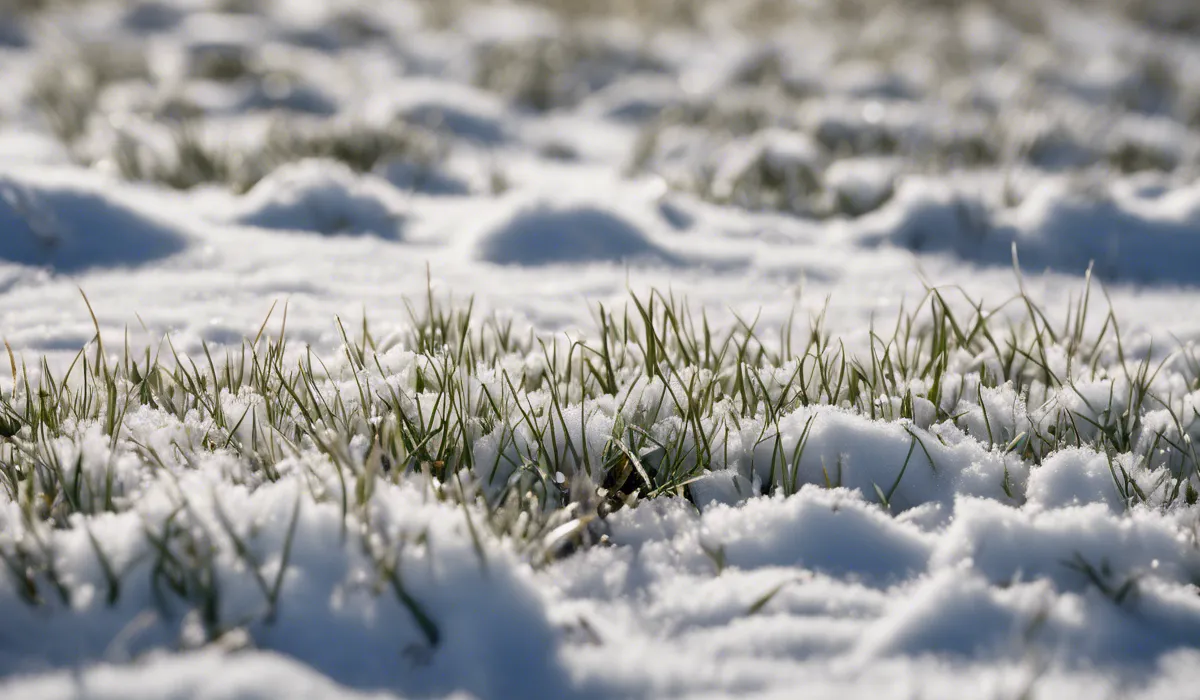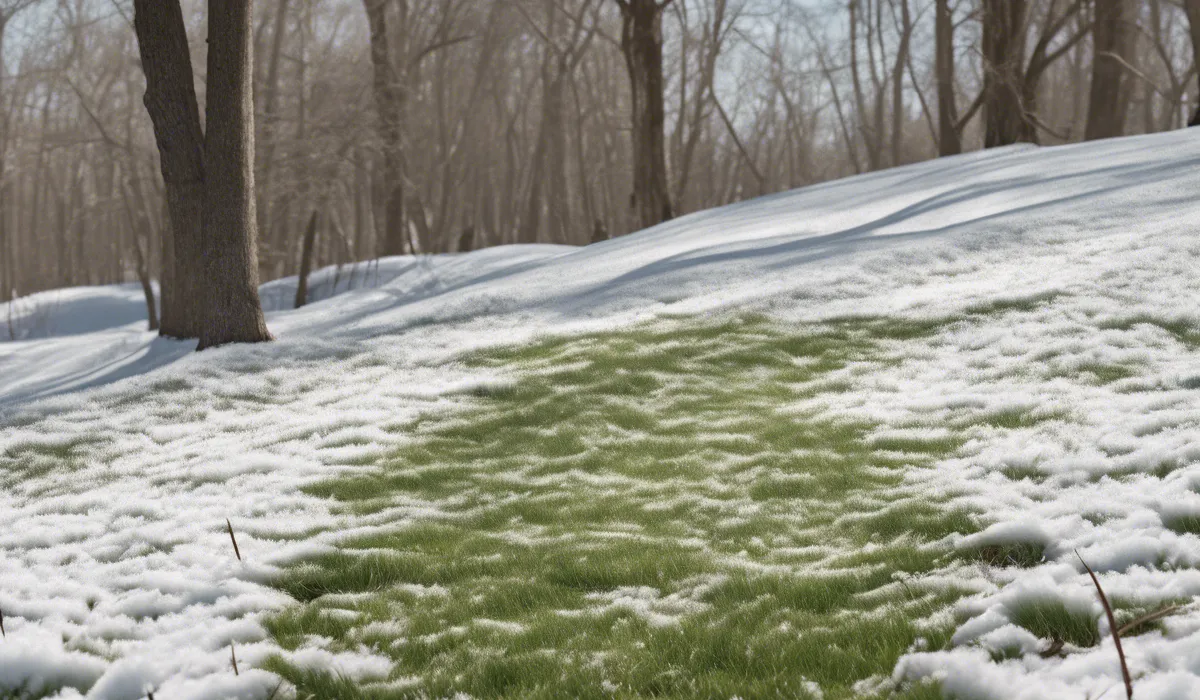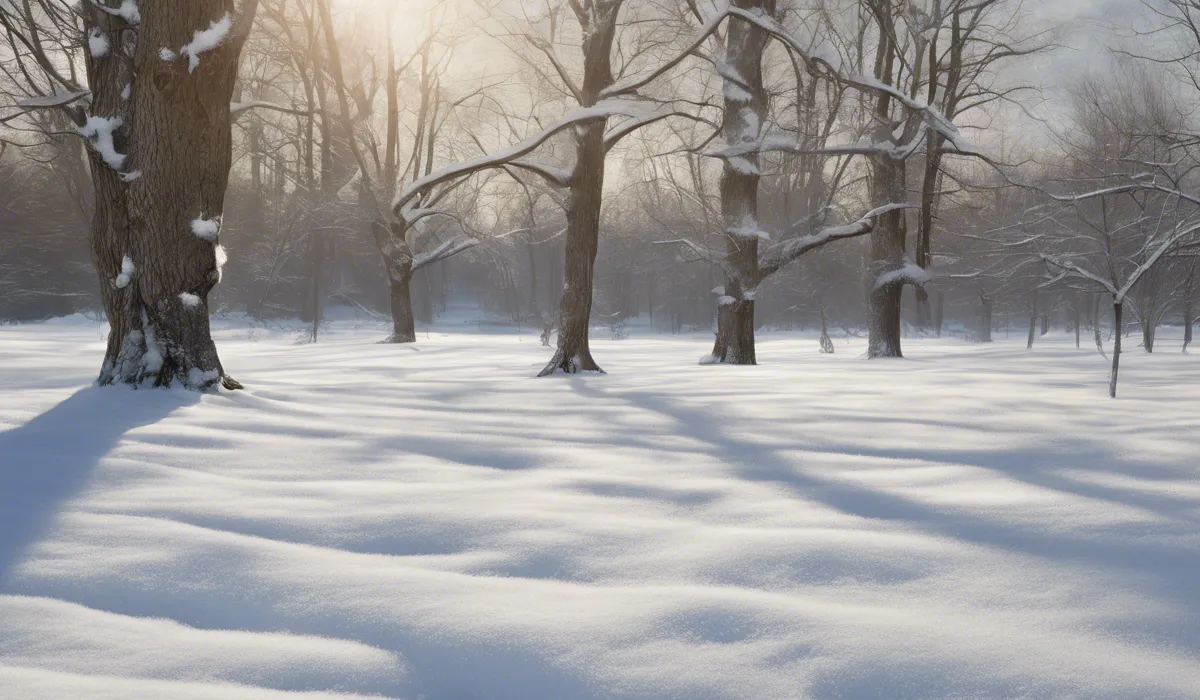Snow mold is a type of fungus that affects grass and plants, appearing as patches of discolored turf after snow melts. It thrives in cold, wet conditions under snow cover. There are two main types: gray and pink, each caused by different fungal species.
Snow MoldDefinition and Causes

Definition of Snow Mold
Snow mold is a type of fungus that attacks grass and plants, often seen as unsightly patches on your lawn once the snow has melted.
Imagine the snow like a blanket that hides this sneaky fungus, waiting for spring to show its damage.
It loves the cold and thrives in wet conditions, creating a challenge for many gardeners and homeowners as winter turns to spring.
Types of Snow Mold
There are two main characters in the story of snow mold: gray snow mold and pink snow mold.
Both are bad news for grass, but they are slightly different. Gray snow mold, also known as Typhula blight, prefers to hang around dead leaves and thatch.
On the other hand, pink snow mold, also called Fusarium patch, is more aggressive and can attack living grass, not just the dead stuff.
Conditions Fostering Snow Mold
For snow mold to throw its unwelcome party, it needs an invitation from specific conditions.
Prolonged snow sitting on the ground is like rolling out the red carpet for this fungus. Add a lack of fresh air moving around, and you’ve given it a VIP pass.
Finally, mix in some cold, wet weather, and snow mold will settle in like an unwanted guest who won’t leave.
Identifying Snow Mold: Signs and Symptoms

Visual Identification of Snow Mold
When snow melts, take a look at your lawn. If you see circles of dead grass that weren’t there last fall, you might be looking at snow mold.
These patches can range from a small size to spreading out several feet. It’s like the fungus is drawing circles in your lawn while you weren’t watching.
Gray vs. Pink Snow Mold
Gray snow mold patches look like someone spilled ash or dust on your lawn, while pink snow mold has a reddish hue, almost like it’s blushing.
Another clue is the weather. Gray snow mold will show up when the ground is freezing and thawing, while pink loves the cold and will appear even when the ground is still frozen.
Common Areas for Snow Mold
Snow mold likes to chill where the snow stayed the longest, like shady spots or areas where snow was piled high.
It also likes places where the grass was long when winter came, giving it more to feed on.
Impact on Plant Health and Aesthetics
Snow mold isn’t just ugly; it can hurt your grass. If it’s severe, it can kill large areas, leaving bare spots.
It can turn a lush green lawn into a patchy, brown mess, which can be disheartening after looking forward to spring’s greenery.
Managing and Preventing Snow Mold

Cultural Practices for Prevention
Beating snow mold starts with good lawn habits. Mow your lawn to the right height before snowfall and don’t overfeed it with fertilizer.
Keeping the thatch thin helps too, as does watering your lawn just the right amount—enough to keep it healthy, but not so much that it’s wet all the time.
Chemical Control Options
Sometimes, you need to bring in the big guns, like fungicides. These can help stop snow mold from starting or getting worse.
But be careful; you need to know when to use them and consider their impact on the environment. It’s best to ask a professional if you’re not sure.
Recovery Tips for Affected Lawns
If snow mold has already visited your lawn, don’t worry; you can help it recover. Gently rake the affected areas to let air in and dry them out. If the damage is bad, you might need to plant new grass seeds.
Keep an eye on your lawn’s health, and with some care, it can bounce back to its former glory.
FAQs About Snow Mold
What is snow mold and how does it form?
Snow mold is a fungal infection that affects grass and plants, forming discolored patches on turf after snow melts. It forms under snow-covered ground during cold, wet conditions.
What are the main types of snow mold?
The two main types of snow mold are gray snow mold and pink snow mold, each caused by different species of fungi.
Where is snow mold commonly found?
Snow mold is commonly found in areas where there is snow cover for extended periods, particularly in cold, wet conditions that are conducive to fungal growth.
Can snow mold damage my lawn?
Yes, snow mold can damage your lawn by causing discolored patches and potentially killing the grass in the affected areas.
How can I prevent snow mold on my lawn?
Preventing snow mold involves proper lawn care such as removing excess thatch, avoiding late-season fertilization, and mowing the lawn until growth ceases before snowfall.
Final Thoughts
Snow mold is a fungal disease that affects grass and plants, manifesting as discolored patches after snowmelt.
It prospers in the cold, moist environment beneath snow. The disease comes in two primary varieties, gray and pink, each attributable to a distinct species of fungus, and both favoring the prolonged presence of snow cover for development.
